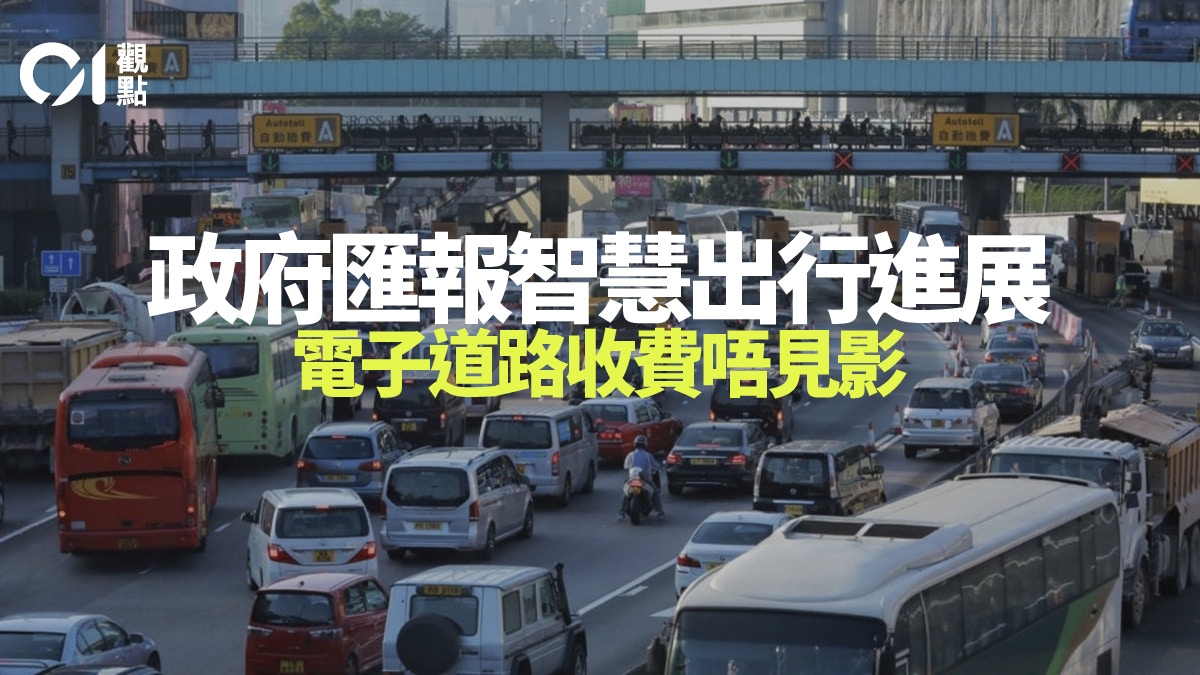The government will report to the Legislative Council this Friday (22nd) on the progress of implementing the Smart Transportation Fund and various smart mobility measures.
The Transport Department released the "Hong Kong Smart Mobility Roadmap" in July 2019, setting out the vision and implementation projects for the next five years and beyond.
The "Roadmap" is halfway through. Although most projects are also progressing, the speed is slow. There are still a few that can be widely applied, and there is no sign of the electronic road pricing system.
Furthermore, as cities in the Greater Bay Area become more integrated, cross-border travel will become closer. The seamless handover mentioned by the Hong Kong government should not only include the road network, but also the interconnection of communication networks in various modes of transportation.
Smart mobility will facilitate citizens' travel and make good use of public transport, relieve congestion and help reduce emissions.
Comparing the latest government documents with the July 2019 Roadmap, most of the projects have been implemented, but they are still in the trial stage and are still far from widespread application. The public does not feel the benefits of the government measures.
ASTRI launched Hong Kong's first IoV road test last year, including installing IoV equipment in the 14-kilometer section of the Science Park, Tolo Highway and Shatin City Centre. The test lasted for 9 months. The picture shows the antenna installed on the vehicle.
(Photo by O Jiale)
Many projects are still on trial, and the electronic road has not been advanced.
For example, the automatic parking system has only completed the project in Tsuen Wan, the real-time traffic light adjustment system has only completed the pilot project implemented at five intersections, and the autonomous driving and car networking technologies that best symbolize smart travel have also been tested last year. , the non-parking toll system will also be gradually implemented from the end of this year, and the payment stickers will be issued in the third quarter, which is two years later than the original time.
Even with the extensive use of ETA data on open public transport, its services still do not cover all GMB and MTR lines.
It is worth noting that the "HKeMobility" app, which collects all traffic information, has an average click rate of only about 50,000 times a day, which is far less than the number of users of the operator's own app and the number of local public transport. Millions of people.
The government wants to review why the built-in function in the program fails to bring up the usage.
Although most of the wisdom of travel projects have been carried out, but in the area of electronic road toll project disappears, does not appear in the government's latest document.
In June last year, the government still said that it was "considering to launch the electronic road pricing pilot scheme in a timely manner", but in October it returned to "considering the future direction of the plan". This year, the Transport and Housing Bureau explained in the budget document that it is considering "congestion levy" After the traffic situation, we will decide how to implement the pilot scheme.
Even electronic road pricing trial, the Government have to see-saw so far, "smart travel" vision, when it will be achieved in Hong Kong?
(file picture)
Council's argument seems reasonable, but congestion in the area is owned by the public after the WHC will not be great changes, planning levy could have continued.
In fact, the Government can conduct an experiment for two to three weeks after the opening of the Central-Wan Chai Bypass, try different toll combinations for the three tunnels, and then monitor the impact on the traffic flow across the harbour.
If so pricing below the level before the experiment in the Western Harbor Crossing, the Government will subsidize the difference.
Although this involves several hundred million dollars of public money, but no better than a delay of a Congestion Relief Program preferred.
Policies must not be mere slogans, do not forget cross-border connections
Wisdom is a travel trend, the overall development of Hong Kong into the Bay Area, cross-border traffic must also make good use of technology and data.
Op Housing Authority commissioned at the end of a consultancy "Transportation strategic research", one of which is to strengthen the category associated with the Bay Area city, but the Secretary Chen sails blog in this month only referred to the development of cross-border railways, set intersection hub, so that members of the public to experience seamless transport connections, no mention of how to combine the cohesion and message sharing large Bay Area trip communication technologies, particularly cross-border dimension of wisdom highway construction, as well as the future of car networking autopilot.
Government in the conception of the wisdom of travel, be sure to take into account the cross-border engagement.
It is a good thing for the government to publish a roadmap for smart travel, but the roadmap and blueprint are often just slogans, and the implementation of policies has been delayed again and again. The area of environmental protection and waste reduction is an example.
The development of the Greater Bay Area does not wait for anyone, and the smart travel plans of surrounding cities are coming faster and more deeply. For example, Guangzhou Huadu District cooperates with the transformation of local automobile production, and plans to have more than 1,000 autonomous vehicles in operation in 2023, and achieve full coverage in 2025. The goal of autonomous driving in the district, Hong Kong has no reason to sigh at the slow pace any longer. We must seize the time to let citizens experience the benefits of smart travel, and then enhance Hong Kong's competitiveness.
MTR fare and then freezing mechanism unresolved issues increase or team to make the system less than the taxi goes far

